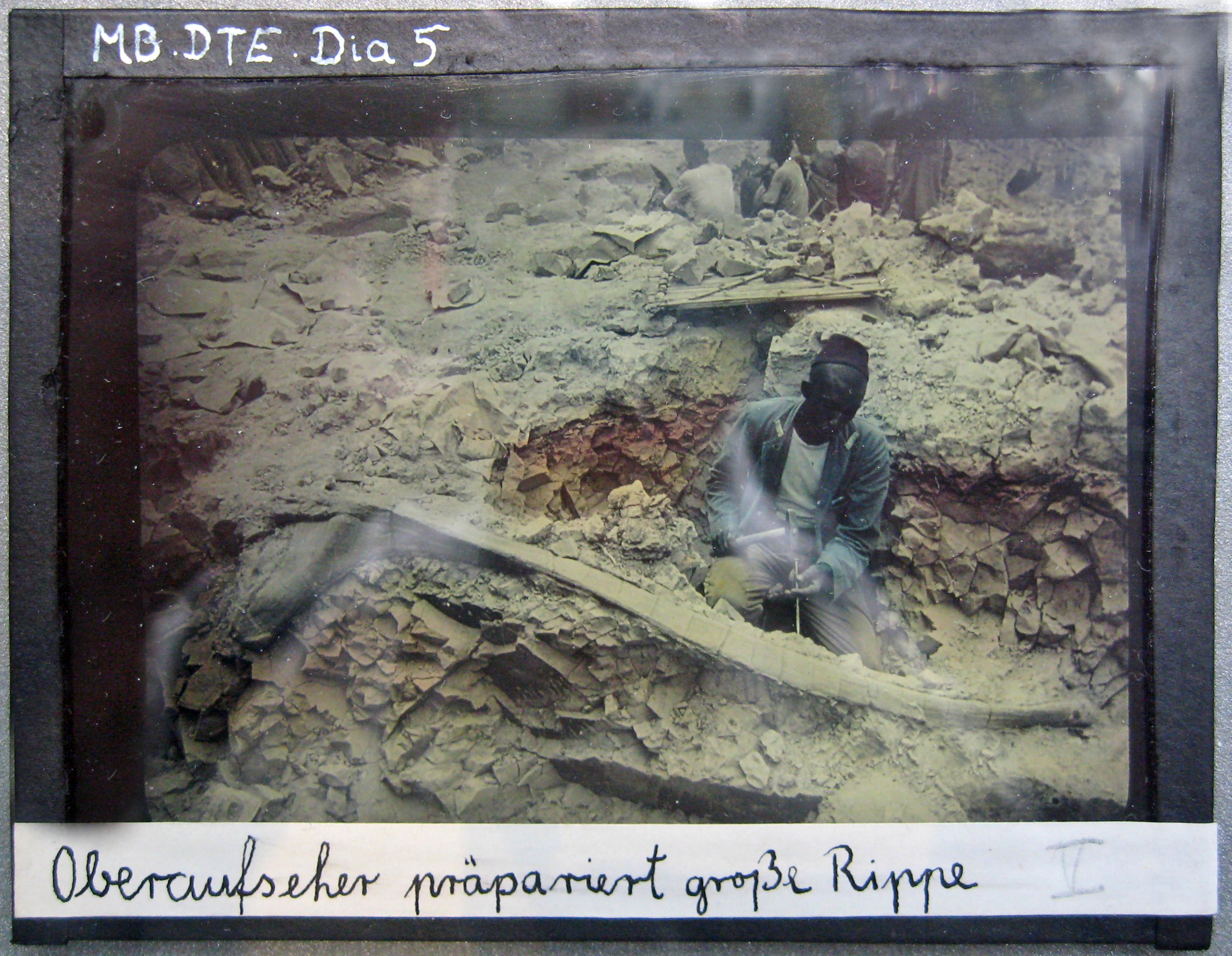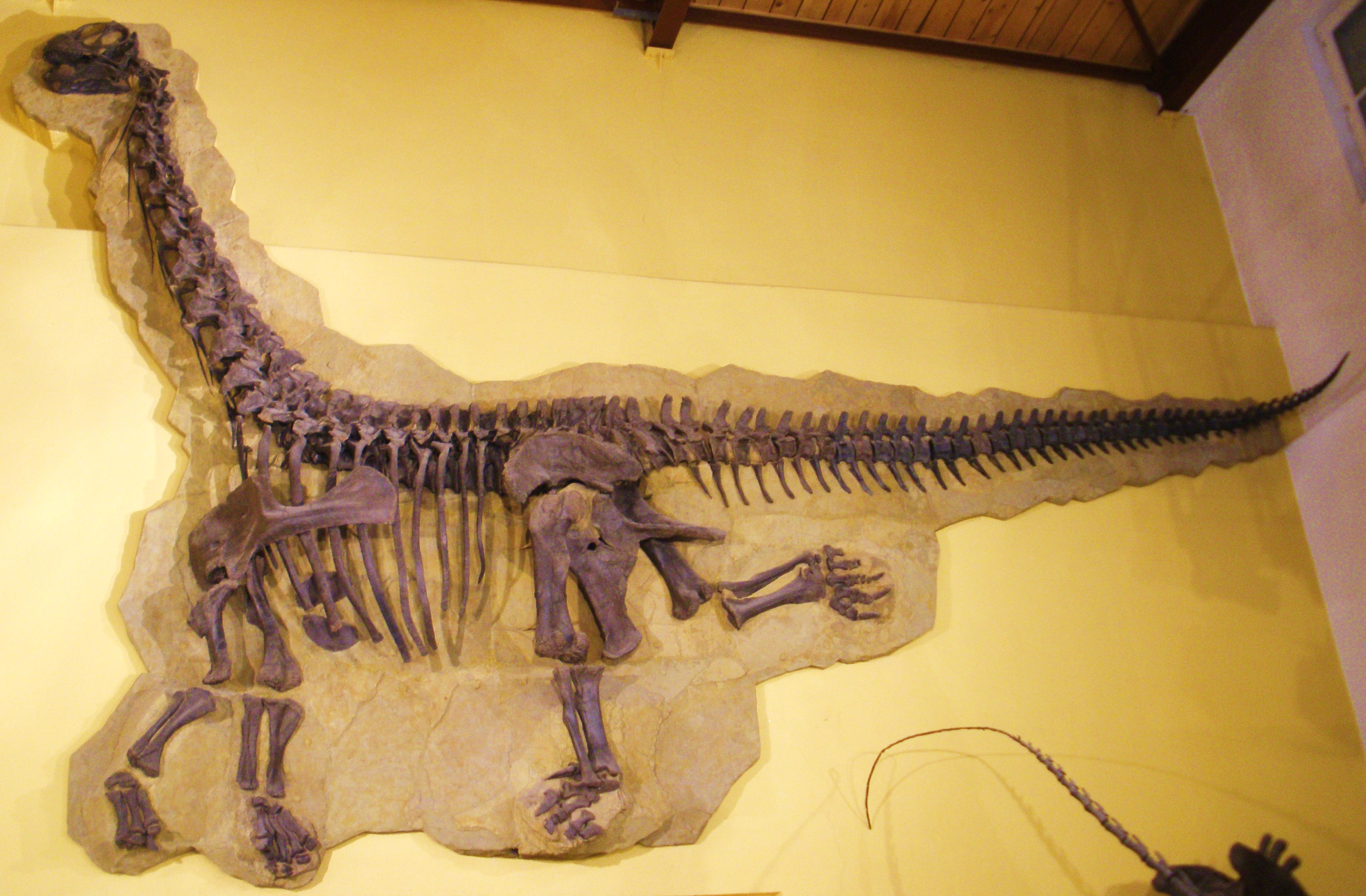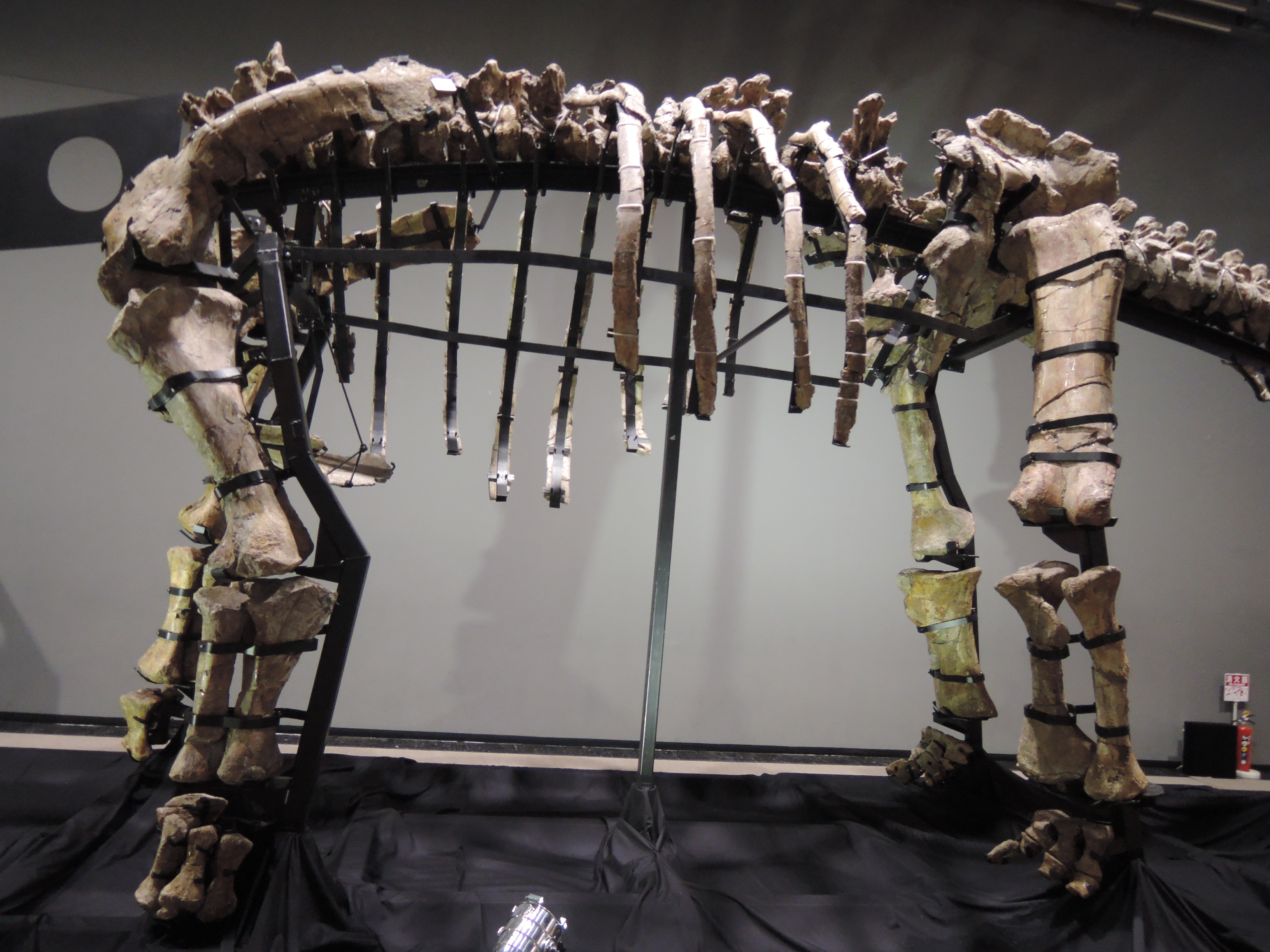|
Venenosaurus
''Venenosaurus'' ( ) is a genus of sauropod dinosaur that lived in what is now Utah during the Early Cretaceous. Its type and only species is ''Venenosaurus dicrocei''. Fossils of ''Venenosaurus'' were first discovered in 1998, by Denver Museum of Natural History volunteer Anthony DiCroce, and described as a new genus and species in 2001 by Virginia Tidwell and colleagues, who named the species for DiCroce. ''Venenosaurus'' was a relatively small sauropod, and was similar to ''Cedarosaurus'', another sauropod from the Early Cretaceous of Utah. Discovery and naming In the spring of 1998, a team of volunteers for the Denver Museum of Natural History, including Anthony "Tony" DiCroce, found a fossil site in Grand County, Utah, which they named Tony's Bone Bed. The bone bed was in the Poison Strip Member of the Cedar Mountain Formation, and contained the remains of the iguanodont ''Planicoxa'', a theropod, and an adult and juvenile of a sauropod. In 2001, Virginia Tidwell, Kenneth C ... [...More Info...] [...Related Items...] OR: [Wikipedia] [Google] [Baidu] |
Early Cretaceous
The Early Cretaceous ( geochronological name) or the Lower Cretaceous (chronostratigraphic name), is the earlier or lower of the two major divisions of the Cretaceous. It is usually considered to stretch from 145 Ma to 100.5 Ma. Geology Proposals for the exact age of the Barremian-Aptian boundary ranged from 126 to 117 Ma until recently (as of 2019), but based on drillholes in Svalbard the defining early Aptian Oceanic Anoxic Event 1a (OAE1a) was carbon isotope dated to 123.1±0.3 Ma, limiting the possible range for the boundary to c. 122–121 Ma. There is a possible link between this anoxic event and a series of Early Cretaceous large igneous provinces (LIP). The Ontong Java-Manihiki-Hikurangi large igneous province, emplaced in the South Pacific at c. 120 Ma, is by far the largest LIP in Earth's history. The Ontong Java Plateau today covers an area of 1,860,000 km2. In the Indian Ocean another LIP began to form at c. 120 Ma, the Kerguelen P ... [...More Info...] [...Related Items...] OR: [Wikipedia] [Google] [Baidu] |
Chevron (anatomy)
A haemal arch also known as a chevron, is a bony arch on the ventral side of a tail vertebra of a vertebrate. The canal formed by the space between the arch and the vertebral body is the haemal canal. A spinous ventral process emerging from the haemal arch is referred to as the haemal spine. Blood vessels to and from the tail run through the arch. In reptiles, the caudofemoralis longus muscle, one of the main muscles involved in locomotion, attaches to the lateral sides of the haemal arches. In 1956, Alfred Sherwood Romer hypothesized that the position of the first haemal arch was sexually dimorphic in crocodilians and dinosaurs. However, subsequent research established that the size and position of the first haemal arch was not sexually dimorphic in crocodilians and found no evidence of significant variation in tyrannosaurid dinosaurs, indicating that haemal arches could not be used to distinguish between sexes after all. Haemal arches play an important role in the taxonomy of s ... [...More Info...] [...Related Items...] OR: [Wikipedia] [Google] [Baidu] |
Gondwanatitan
''Gondwanatitan'' (meaning "giant from Gondwana") was a titanosaurian sauropod dinosaur. ''Gondwanatitan'' was found in Brazil, at the time part of the southern supercontinent Gondwana, in the late Cretaceous Period (70 mya). Like some other sauropods, ''Gondwanatitan'' was tall and ate tough shoots and leaves off of the tops of trees. ''G. faustois closest relative was ''Aeolosaurus''. The type species is ''Gondwanatitan faustoi'', formally described by Kellner and de Azevedo in 1999. Etymology ''Gondwanatitan'' means "Gondwana Titan", and is named after Gondwana, the supercontinent that the genus' South American range was once part of, and the Titans of classical Greek mythology. The type and only named species, ''G. faustoi'', is a patronym honoring Dr. Fausto L. de Souza Cunha, a former curator at the Museu Nacional/UFRJ who led the excavation of the type specimen. Description ''Gondwanatitan'' was a fairly small sauropod, only 7 meters (23 ft) long and weighing about 1 ... [...More Info...] [...Related Items...] OR: [Wikipedia] [Google] [Baidu] |
Saltasaurus
''Saltasaurus'' (which means "lizard from Salta") is a genus of saltasaurid dinosaur of the Late Cretaceous period of Argentina. Small among sauropods, though still heavy by the standards of modern creatures, ''Saltasaurus'' was characterized by a short neck and stubby limbs. It was the first genus of sauropod known to possess armour of bony plates embedded in its skin. Such small bony plates, called osteoderms, have since been found on other titanosaurians. Discovery The fossils of ''Saltasaurus'' were excavated by José Bonaparte, Martín Vince and Juan C. Leal between 1975 and 1977 at the Estancia "El Brete". The find was in 1977 reported in the scientific literature. ''Saltasaurus'' was named and described by Bonaparte and Jaime E. Powell in 1980. The type species is ''Saltasaurus loricatus''. Its generic name is derived from Salta Province, the region of north-west Argentina where the first fossils were recovered. The specific name means "protected by small armoured plat ... [...More Info...] [...Related Items...] OR: [Wikipedia] [Google] [Baidu] |
Aeolosaurus
''Aeolosaurus'' (; "Aeolus' lizard") is a genus of titanosaurian sauropod dinosaur from the Late Cretaceous Period of what is now South America. Like most sauropods, it would have been a quadrupedal herbivore with a long neck and tail. ''Aeolosaurus'' is well known for a titanosaur, as it is represented by the remains of several individuals belonging to at least two species. However, like most titanosaurs, no remains of the skull are known. The holotype of ''Aeolosaurus rionegrinus'' consists of a series of seven tail vertebrae, as well as parts of both forelimbs and the right hindlimb. It was discovered in the Angostura Colorada Formation in Argentina, which dates from the Campanian stage of the Late Cretaceous, about 83 to 74 million years ago. The species ''A. maximus'' was transferred over to the new genus '' Arrudatitan'' in 2021. Etymology This dinosaur is named after the Greek mythological figure Aeolus, Keeper of the Winds in Homer's Odyssey, because of the frequent wind ... [...More Info...] [...Related Items...] OR: [Wikipedia] [Google] [Baidu] |
Malawisaurus
''Malawisaurus'' (meaning "Malawi lizard") is an extinct genus of titanosaurian sauropod dinosaur. It is known from the Dinosaur Beds of northern Malawi, which probably date to the Aptian stage of the Early Cretaceous. The type species is ''M. dixeyi'' and the specific name honours Frederick Augustus Dixey. Discovery and naming ''Malawisaurus dixeyi'' was originally described in 1928 by Sidney H. Haughton as a species of ''Gigantosaurus'' (an invalid name for the diplodocid currently known as ''Tornieria''). Haughton considered it closely related to the species ''G. robustus'' (later the type species of ''Janenschia''). The holotype was discovered in the "Dinosaur Beds" of Malawi (then known as the Nyasaland Protectorate), which are usually considered to be of Barremian-Aptian age based on K–Ar dating, though they have also been suggested to be Late Cretaceous in age based on the vertebrate assemblage, and possibly also the Lupata Group. In 1993 it was placed in the newly na ... [...More Info...] [...Related Items...] OR: [Wikipedia] [Google] [Baidu] |
Andesaurus
''Andesaurus'' ( ; "Andes lizard") is a genus of basal titanosaurian sauropod dinosaur which existed during the middle of the Cretaceous Period in South America. Like most sauropods, belonging to one of the largest animals ever to walk the Earth, it would have had a small head on the end of a long neck and an equally long tail. History of discovery In 1991, paleontologists Jorge Orlando Calvo and José Fernando Bonaparte named ''Andesaurus'', which refers to the Andes and also includes the Greek word ''sauros'' ("lizard"), because of the proximity of this animal's remains to the Andes. ''Andesaurus'' fossils were found by Alejandro Delgado, after whom the single known species (''A. delgadoi'') is named. The only known material of ''Andesaurus'' is a partial skeleton consisting of a series of four vertebrae from the lower back, as well as 27 tail vertebrae, divided up into two series from separate parts of the tail. The vertebrae from the middle part of its tail had elongated ... [...More Info...] [...Related Items...] OR: [Wikipedia] [Google] [Baidu] |
Titanosaurs
Titanosaurs (or titanosaurians; members of the group Titanosauria) were a diverse group of sauropod dinosaurs, including genera from all seven continents. The titanosaurs were the last surviving group of long-necked sauropods, with taxa still thriving at the time of the extinction event at the end of the Cretaceous. This group includes some of the largest land animals known to have ever existed, such as ''Patagotitan''—estimated at long with a weight of —and the comparably-sized ''Argentinosaurus'' and ''Puertasaurus'' from the same region. The group's name alludes to the mythological Titans of ancient Greek mythology, via the type genus (now considered a ''nomen dubium)'' ''Titanosaurus''. Together with the brachiosaurids and relatives, titanosaurs make up the larger sauropod clade Titanosauriformes. Titanosaurs have long been a poorly-known group, and the relationships between titanosaur species are still not well-understood. Description Titanosauria have the largest ran ... [...More Info...] [...Related Items...] OR: [Wikipedia] [Google] [Baidu] |
Brachiosaurus Brancai
''Giraffatitan'' (name meaning "titanic giraffe") is a genus of sauropod dinosaur that lived during the late Jurassic Period (Kimmeridgian–Tithonian stages) in what is now Lindi Region, Tanzania. It was originally named as an African species of ''Brachiosaurus'' (''B. brancai''), but this has since been moved to its own genus. ''Giraffatitan'' was for many decades known as the largest dinosaur but recent discoveries of several larger dinosaurs prove otherwise; giant titanosaurians appear to have surpassed ''Giraffatitan'' in terms of sheer mass. Also, the sauropod dinosaur ''Sauroposeidon'' is estimated to be taller and possibly heavier than ''Giraffatitan''. Most size estimates for ''Giraffatitan'' are based on the specimen HMN SII, a subadult individual, but there is evidence supporting that these animals could grow larger; specimen HMN XV2, represented by a fibula 13% larger than the corresponding material on HMN SII, might have attained in length and in body mass or ... [...More Info...] [...Related Items...] OR: [Wikipedia] [Google] [Baidu] |
Camarasaurus Grandis
''Camarasaurus grandis'' is an extinct species of sauropod dinosaur in the genus that lived during the Jurassic in what is now the western United States. It is the geologically oldest of the four species of the genus ''Camarasaurus''. Taxonomy ''Camarasaurus grandis'' was named by Othniel Charles Marsh in 1877. It is one of four valid species of ''Camarasaurus'', alongside ''Camarasaurus lentus'', '' Camarasaurus lewisi'', and ''Camarasaurus supremus''. The type specimen of ''Camarasaurus grandis'' is the holotype YPM 1901, a partial skeleton of an immature individual from Como Bluff, Wyoming. ''Camarasaurus grandis'' is regarded as having three junior synonyms: ''Morosaurus impar'', ''Morosaurus robustus'', and ''Pleurocoelus montanus''. One of these junior synonyms, ''M. impar'', is the type species of ''Morosaurus'', the genus to which ''C. grandis'' and ''C. lentus'' were assigned until it was synonymized with ''Camarasaurus''. ''Amphicoelias latus'', which is conventionall ... [...More Info...] [...Related Items...] OR: [Wikipedia] [Google] [Baidu] |
Camarasaurus Lewisi
''Camarasaurus lewisi'' is a species of sauropod dinosaur from the Upper Jurassic of the United States. It was named by James A. Jensen in 1988. ''C. lewisi'' was originally placed in its own genus, ''Cathetosaurus'', but in 1996 it was reclassified as a species of ''Camarasaurus''; most researchers since have considered it to be one of the four valid species of ''Camarasaurus''. Two unpublished studies have since argued that the genus ''Cathetosaurus'' should be reinstated, whereas two other studies have argued that ''C. lewisi'' may be a junior synonym of another species of ''Camarasaurus''. Description ''C. lewisi'' is the smallest species assigned to ''Camarasaurus''; despite representing a very old individual, the holotype specimen is roughly 26% smaller than ''C. supremus'', with a humerus long. The possible ''C. lewisi'' specimen SMA 0002 also represents a fully mature individual, but is exceptionally small, with a humerus only long. It is possible that the size differen ... [...More Info...] [...Related Items...] OR: [Wikipedia] [Google] [Baidu] |
Opisthocoelicaudia
''Opisthocoelicaudia'' is a genus of sauropod dinosaur of the late Cretaceous, Late Cretaceous Period discovered in the Gobi Desert of Mongolia. The type species is ''Opisthocoelicaudia skarzynskii''. A well-preserved skeleton lacking only the head and neck was unearthed in 1965 by Polish and Mongolian scientists, making ''Opisthocoelicaudia'' one of the best known sauropods from the Late Cretaceous. Tooth marks on this skeleton indicate that large carnivorous dinosaurs had fed on the wikt:carcass, carcass and possibly had carried away the now-missing parts. To date, only two additional, much less complete specimens are known, including part of a pectoral girdle, shoulder and a fragmentary tail. A relatively small sauropod, ''Opisthocoelicaudia'' measured about in length. Like other sauropods, it would have been characterised by a small head sitting on a very long neck and a barrel shaped trunk carried by four column-like legs. The name ''Opisthocoelicaudia'' means "posterior ca ... [...More Info...] [...Related Items...] OR: [Wikipedia] [Google] [Baidu] |






